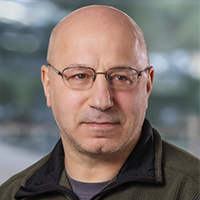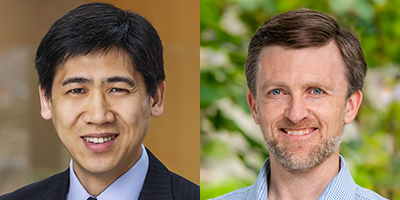Andlinger Center supports research to separate critical minerals for the energy transition
The Andlinger Center has awarded a grant for Innovative Research in Energy and the Environment to an interdisciplinary team seeking to develop a way to separate and extract lithium and other critical minerals for the energy transition.

The team, led by Howard Stone, the Donald R. Dixon ’69 and Elizabeth W. Dixon Professor of Mechanical and Aerospace Engineering, will explore the possibility of developing an evaporation-driven, continuous flow process for concentrating and separating valuable minerals needed for electrochemical energy storage.
The project takes its inspiration from a process developed in the lab of co-investigator Z. Jason Ren, professor of civil and environmental engineering and the Andlinger Center for Energy and the Environment. In a paper published last year in Nature Water, Ren and colleagues demonstrated a string-based approach for successfully concentrating and separating sodium and lithium salts from a simulated brine solution, an innovation that could dramatically reduce the land and time required to extract lithium from geothermal brines.
“Jason’s work was exciting because it opens the door for a new kind of separation,” said co-investigator Ryan Kingsbury, assistant professor of civil and environmental engineering and the Andlinger Center for Energy and the Environment. “And at its core, the approach was driven by the simple process of evaporation, which is a good thing. If you look at many of the industrial processes in use today, you can see that processes that seem most simple are often the ones that are most robust.”

While Ren’s work demonstrated the capability of a string-based configuration for separating and harvesting lithium salts, the research team on the current project will compare the effectiveness of several alternative configurations. They will also explore ways to convert Ren’s original approach from a batch to a continuous flow process to increase its relevance to industrial applications.
“In the original approach, once the strings fill up with salt crystals, there has to be some processing step before they can be used again,” said Stone. “We’re trying to take steps toward developing an alternative that can operate as a continuous flow process, which would be a big advantage for making the process more amenable to widespread industry use.”
Stone, alongside collaborator and former Andlinger Center Distinguished Postdoctoral Fellow Fernando Temprano-Coleto, have already constructed microfluidic devices — platforms for measuring fluid flows — to observe the behavior of salt solutions as they travel through micron-scale channels.
Studying fluid-flow phenomena at such a small scale will provide insight into how quickly the salts concentrate and crystallize, which will be critical for controlling a continuous flow process.

“Real brines are a complex mixture of many salts, and often times, the most valuable salts don’t crystallize until after the less valuable ones,” Temprano-Coleto said. “We’re seeking to engineer the crystallization process so that we can concentrate the minerals we want without clogging the system with other salt crystals.”
To that end, the team will tap into the water chemistry expertise of co-investigator Kingsbury, who will explore ways to control the separation process, ensuring that the desired minerals precipitate out of the solution at the right location. He will experiment with tuning aspects of the process, such as altering the pH of the solution or applying an electric field at specific positions along the flow channels. Kingsbury said these alterations can provide more “knobs” to tune, potentially allowing engineers to “steer” the separation process toward the desired salt products.
While the team’s near-term target is to develop a proof-of-concept process that can continuously separate and concentrate lithium from a solution of mixed salts, the researchers said that a successful lithium system could pave the way for rapid customization to other minerals. With a solid understanding of the underlying physical processes, the approach could be tailored for any number of industrial separations that rely on evaporation.
“Energy storage will be a major part of the future energy system,” Stone said. “And most energy storage technologies, like batteries, solar photovoltaics, and wind turbines, require a consistent supply of critical minerals. If we can demonstrate the validity of our approach, then we can continue to refine it and scale it for industrial applications.”
Related articles:


